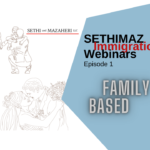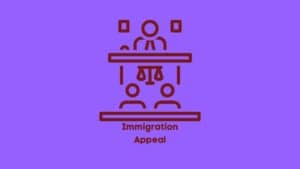Introduction
Are you relaxing that you have successfully filed your immigration petition and will soon enter the US? A Notice of Intent to Deny (NOID) can interrupt your happy time, and you may find yourself tangled in a complicated immigration issue. The best way to avoid any confusion is to know what a NOID is and what to do if you have received a NOID from the USCIS. This article provides detailed information to help you prevent confusion.
What is a Notice of Intent to Deny (NOID)?
Notice of Intent to Deny (NOID) is a notice from the United States Citizenship and Immigration Services (USCIS) to inform the petitioner that his immigration petition is on the verge of getting denied by the evaluating officer. The NOID contains the reasons why USCIS intends to deny your petition and provides you a chance to set aside the reasons by providing evidence and information.
Is NOID different from Request for Evidence (RFE)?
Yes, NOID and RFE are different. Typically, RFE is a notice issued when the evaluating officer thinks insufficient evidence exists to approve the immigration petition. Every visa petition requires certain mandatory documents, which are crucial for their processing. The evaluating officer can request additional records from the petitioner through an RFE notice.
On the other hand, a NOID is served when the chances for approval of an immigration petition are less, and the petition is on the verge of denial, but the evaluating officer believes that additional information and evidence from the petitioner may change the outcome of the decision. A NOID notice will contain why the evaluating officer thinks your petition will be denied, while an RFE will ask for additional evidence to avoid denying the petition.
Your visa petition may contain sufficient initial evidence, but for some reason, USCIS is not in favor of approval of your petition. For example: For an I-130 petition, you and your spouse may have shown sufficient documentary evidence for the legitimacy of your marriage but failed to answer the fundamental questions about each other at the interview. Therefore, NOID is issued to you, and you have to convince the USCIS why they should approve your petition.

What to do if I received a NOID?
When you receive a NOID, it will list the reasons the evaluating officer thinks can lead to denial of your petition. Firstly, do not panic when you receive a NOID. It is not the end of your immigration petition; instead, USCIS is providing you a chance to furnish additional evidence and information to bring the outcome of your petition in your favor.
In most cases, you are provided 30 days to respond to NOID. You should address each issue clearly with supporting evidence and data. Do not skip any point in your response, as a partial response might lead to the rejection of your petition. The best way is to get help from an immigration attorney to draft a more suitable response addressing all the issues and improving your petition’s chances of approval.
*In response to the COVID 19 pandemic, USCIS has provided 60 calendar days to file a response to the NOID if received between March 1, 2020, to September 30, 2021.
CONTACT SETHI AND MAZAHERI IF YOU RECEIVED A NOID
Immigration attorneys at Sethi and Mazaheri are experienced and have comprehensive knowledge of their subject matter. Contact us if you received a NOID or RFE to consult regarding your next steps. This will significantly improve the chances of the outcome in your favor. Our immigration attorneys will answer all of your immigration queries and guide you through the immigration process.
What if my response to NOID gets denied by the USCIS?
If you have consulted with an immigration attorney and filed your response to NOID promptly, still, there is a possibility that your response receives a denial. In such cases, you should know how to proceed with your visa application. You will be having the following options to choose from, depending upon your visa type:
Appeal: You may go for appeal against the decision on your application. You can appeal through the USCIS Administrative Appeals Office (AAO) or the Board of Immigration Appeals (BIA). You can find the information regarding where and how to appeal your denial notice. You can read more about immigration appeals here. (Please link the “Immigration Appeal” article once published).
File a Motion: You may file a legal motion to reconsider or reopen your immigration case. Typically, it is a request to the USCIS to review its decision based on new evidence/facts.
Reapply: You can reapply for the visa petition, which was denied. The reasons for denial may be any, such as ineligibility at the time of petition or lacking sufficient supporting documents. If you think you have fixed the errors, you can reapply for the visa petition hoping that it will get approved this time.
Whatever you choose, consider consulting an immigration attorney. He can guide you in your best interest.
Conclusion
If you have received a NOID, stay calm. You must have known your further steps. Gather evidence to address the specific issues and make sure to file your response on time. Understanding the process can save you from denials or rejections, and you can better decide your further steps. It is always recommended to consult an experienced immigration attorney who had previously filed NOID responses. You can always contact us if you require any assistance.








 by Prozco®
by Prozco®